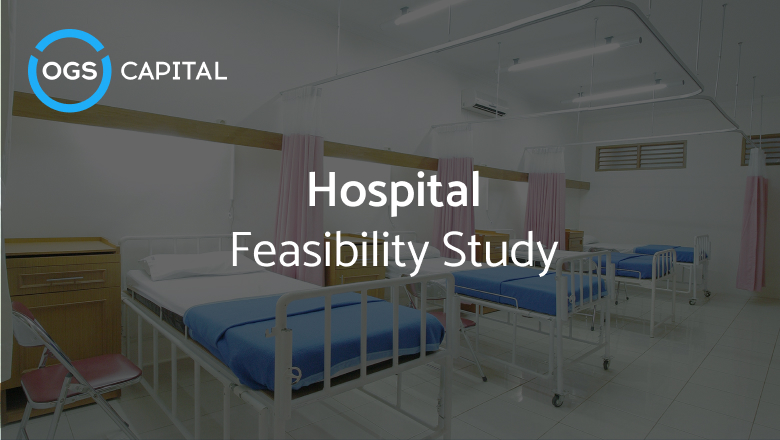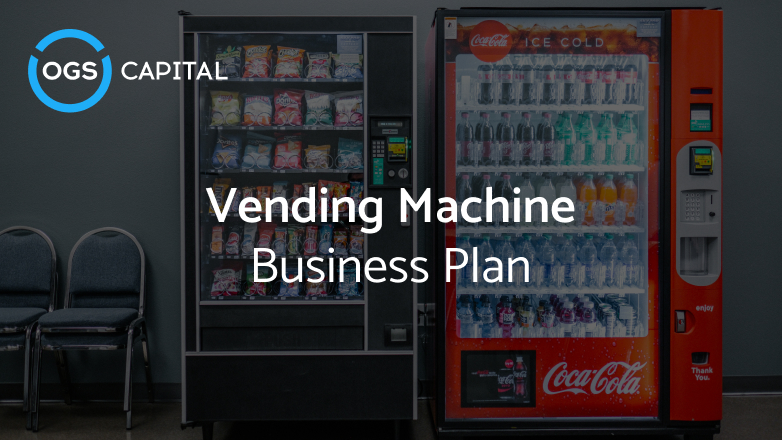Table of Content
What is a Feasibility Study for a Hospital Project?
Expanding healthcare services requires big construction projects, like adding a new wing to a hospital. Before investing time and money into a significant expansion, hospital administrators must determine if their idea makes practical sense. That’s where a hospital feasibility study comes in.
A feasibility study is like a compass, guiding decision-makers through all the critical factors of the potential project. The study looks at the project from different angles to get a complete picture. Analysts dive deep into the costs, logistics, financials, and community impacts. They assess things like:
- Will the area have enough demand and growth to justify adding services?
- What property sites make strategic sense for the project?
- What permitting, regulations, and zoning requirements apply?
- Where will funding and financing come from?
- What revenues can cover costs once open?
- How will residents and health providers react?
Evaluating all these puzzle pieces provides a multidimensional perspective. Hospital administrators gain concrete data from the hospital feasibility study report for a new hospital to decide if their visionary expansion can become a practical reality. This article explores the essential components of these critical feasibility studies, including the hospital business plan. Thoughtful planning allows hospitals to grow their services and provide greater community access strategically.
Market Needs Analysis in a Feasibility Study for a Hospital Project
Statista projects substantial growth in the Hospitals market in the United States in the coming years, forecasting a 2.69% growth rate between 2023 and 2027. This growth will boost the total market volume to US$1,597 billion by 2027, presenting promising opportunities for new hospital projects.
When considering such large-scale investments, an in-depth market needs analysis is one of the most critical components of a hospital project feasibility study. This large-scale assessment determines if the community has sufficient demand and needs to justify the proposed hospital project’s significant investment and operating costs.
The market analysis examines several key areas:
- Population Demographics – A detailed analysis of population size, density, growth trends, age distribution, and other demographic data helps quantify the potential patient pool and demand within the given service area. High-growth markets warrant expanded services.
- Healthcare Utilization Trends – Researchers study current utilization patterns at existing healthcare facilities in the region across inpatient, outpatient, ER, and ancillary services. Historical use data and projections help identify service gaps or underutilized areas to guide hospital planning.
- Competitor Assessment – The market study thoroughly evaluates competing hospitals, health systems, clinics, and outpatient centers in the service area. Assessing competitors’ strengths, offerings, prices, and strategic plans reveals where competition is lacking, and patient needs are unmet.
- Physician Needs – The feasibility study evaluates the availability of qualified physicians to staff new facilities and physician office space needs. This evaluation ensures adequate medical resources are available to support the project.
- Payer Mix Analysis – The market payer mix, including percentages of commercially insured, Medicare, Medicaid, and self-pay patients, is analyzed to model net revenues and identify revenue cycle considerations.
- Community Input – Interviews, focus groups, and surveys collect direct input from residents on their perceptions of access, community health needs, and support for a new hospital project.
By studying these dynamics from both data-driven and community perspectives, the market analysis provides critical insights into the viability of a hospital expansion or development project within a given community. Conducting a thorough market needs analysis is a key part of how to do a feasibility study for a hospital project.
Financial Feasibility Study for a Hospital Project
Hospital administrators must look at the dollars and cents before starting major construction projects. A financial feasibility study is critical to determining if a hospital expansion or new building makes economic sense.
Financial experts dig into the potential costs and revenues of the proposed project from all angles. Estimating costs involves looking at the following:
- Land, building, equipment, and other capital investment needs
- Staffing, utilities, supplies, and other ongoing operating expenses
- Interest payments and additional costs for construction loans
Projecting future revenues requires analyzing factors like:
- How many patients are expected based on community need
- The percentage of patients covered by Medicare, Medicaid, insurance, etc.
- How reimbursement rates and payer mix may change over time
- How population growth could increase long-term demand
A robust hospital financial feasibility analysis uses realistic forecasts for demand, growth, inflation, occupancy, and other economic factors. This allows experts to generate pro forma statements that preview revenues, expenses, cash flows, ROI, breakeven timelines, and viability under different scenarios. The goal is to prevent taking on unsafe financial risks. Prudent hospital planning requires thoroughly crunching the numbers to evaluate expansion viability from all financial angles.

Feasibility Study for Hospital Construction
The costs associated with new hospital construction have been rising sharply in recent years, with the average cost per square foot of a three-story hospital climbing 15% from $362.69 in 2019 to $419.18 in 2023, according to an April 2023 report by Building Design + Construction. With hospital building costs on the ascent, a hospital feasibility study’s physical structure and layout analysis takes on even greater importance.
This study section examines potential land and zoning requirements, architectural designs, environmental impact, and other key physical considerations for new construction or major renovation projects. It closely evaluates site options, designs, required permits and approvals, sustainability goals, space programming, and how the physical facility will meet the project’s healthcare needs and vision.
A feasibility study for hospital construction should answer questions such as:
- Are suitable building sites or existing structures available? For real estate acquisitions, a private placement memorandum provides details on the property.
- What are the zoning and permit requirements? A real estate feasibility study evaluates zoning, valuations, and development potential.
- How should the facility be designed and laid out? What is needed per department?
- How does the proposed construction impact traffic patterns?
- What sustainability features should be incorporated? For example, integrating solar PV power plants.
- How long will construction take? What is the phasing plan?
A strong feasibility study for hospital construction leverages site surveys, soil tests, building codes, design standards, and equipment specs. Advanced tools like CAD, BIM, and simulation software help optimize structural design and layout. An in-depth review by architects and contractors at this stage circumvents roadblocks later on. The aim is to craft a pragmatic construction blueprint from the project vision backed by solid data. Doing the groundwork avoids inefficiencies when building the hospital.
Operation Plan in Feasibility Study for a Hospital Project
An operation plan involves developing and implementing the policies, procedures, and systems that will govern the daily operations of your hospital project. An operation plan aims to ensure that your hospital project delivers high-quality, safe, efficient, and effective healthcare services to your patients. An operation plan should answer questions such as:
- Which clinical and support departments are needed, and at what staffing levels?
- What types of equipment, technologies, and specialties should each department have?
- How will patient flow, throughput, and care processes work?
- What IT systems, medical records, and administrative processes will be used?
- How will staff be hired and trained?
A strong hospital operation plan utilizes proven healthcare administration best practices and evidence-based clinical guidelines to develop detailed workflows, policies, checklists, and systems using tools like flowcharts, diagrams, and simulation software. This ensures a smooth facility launch and scale-up, as hospital leaders can confirm sufficient infrastructure and trained staff will be in place on day one to manage workflows, volumes, and quality care. Thorough planning is crucial for operational preparedness and adaptability.
Outline for a Hospital Feasibility Study
Here is an outline for a private hospital feasibility study:
Introduction
I. Executive Summary
Overview of key findings and recommendations
II. Market Analysis
- Service area demographics and population trends
- Health indicators and disease prevalence
- Existing healthcare facilities and services
- Competitor analysis
- Community surveys and focus groups
- Projections for future demand and capacity needs
III. Site Evaluation
- Description of proposed location(s)
- Zoning and permit requirements
- Transportation access and parking needs
- Utility infrastructure assessment
- Environmental impact considerations
IV. Facility Design and Construction
- Departmental space programming
- Architectural plans and renderings
- Construction cost estimate
- Phasing and schedule
- Traffic mitigation plans
V. Operational Plan
- Organizational chart
- Clinical department staffing plans
- Equipment needs
- IT systems and medical records
- Patient throughput and flow plans
- Policies and procedures
VI. Financial Analysis
- Project capital costs
- Operating expense projections
- Revenue projections
- Break Even analysis
- Return on investment
- Sensitivity analysis
- Financing options
VII. Conclusions and Recommendations
After completing the feasibility study, the hospital determines the project is viable based on the analysis of market demand, financials, operations, and community benefits.
OGSCapital – Leading Experts for Your Hospital Feasibility Study
When conducting a thorough and accurate feasibility study for your business, partnering with experts like OGSCapital can make all the difference. Our team of experts has prepared hundreds of feasibility studies across a wide range of industries, giving us unparalleled insights into what makes a business idea viable.
Our feasibility study consultants don’t just blindly run the numbers – we dive deep to understand your business model, target market, and growth potential. We identify key assumptions that can make or break your business case. And we provide actionable strategic recommendations to improve your chances of success.
As an extension of your team, OGSCapital gets to know your business intricately to conduct customized analysis that validates and optimizes business concepts before launch; our hands-on feasibility studies are a major yet crucial investment that uncovers all factors impacting viability so you can make informed decisions, access capital, accelerate growth, and determine if your idea can become a thriving business.
Don’t leave this important task to chance – contact us at OGSCapital today to get started on your feasibility study.
Frequently Asked Questions
1. What are the 5 areas of feasibility study?
A feasibility study examines technical, economic, legal, operational, and schedule viability to determine if a proposed product or service can be successfully developed and delivered. It analyzes if the company has the capabilities, resources, and plan to produce the offering within time constraints profitably.
2. What are 4 components areas of a feasibility study?
The key components of a feasibility study analyze the market, technical requirements, financials, and organizational capabilities to determine if a proposed product or service can viably meet customer demand at a profit.
3. Are there 6 types of feasibility study?
The main types of feasibility studies include:
- Technical feasibility
- Economic feasibility
- Legal feasibility
- Operational feasibility
Some also consider Schedule feasibility and Resource feasibility as additional types. But the four main feasibility studies cover most aspects.
4. What are the 8 steps to an effective feasibility study?
The key steps in an effective feasibility study are:
- Define the project scope and goals
- Do a market analysis for demand and competitors
- Specify requirements for staffing, equipment, materials, etc.
- Estimate project costs
- Calculate expected revenues and profits
- Assess technical, legal, and operational feasibility
- Determine schedule/timeline feasibility
- Make a feasibility assessment and decision
OGSCapital’s team has assisted thousands of entrepreneurs with top-rate business plan development, consultancy and analysis. They’ve helped thousands of SME owners secure more than $1.5 billion in funding, and they can do the same for you.



















